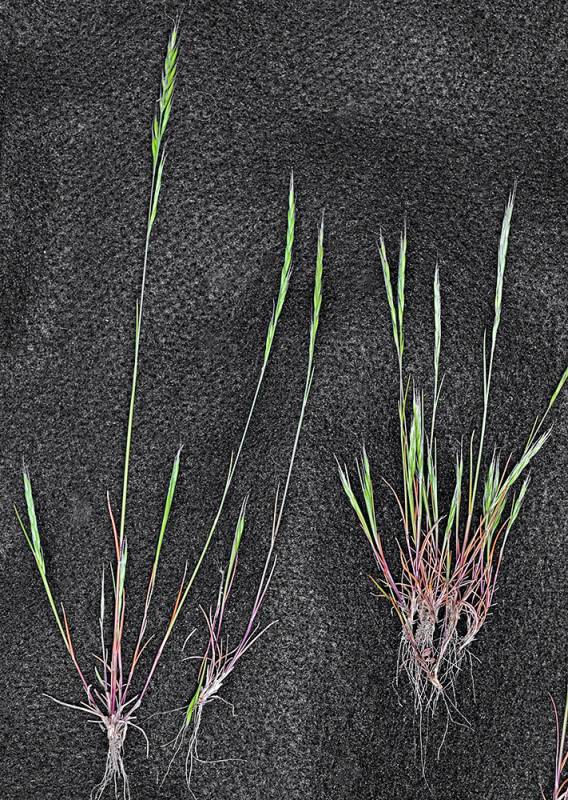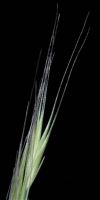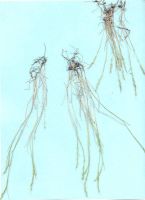Distribution: Occurring on both sides of the Cascades crest in Washington; southern British Columbia to California, east to the Rocky Mountains, southern Great Plains, and eastern North America.
Habitat: From ocean beaches and salt marshes to sagebrush deserts.
Flowers: April-June
Origin: Introduced from Europe
Growth Duration: Annual
Conservation Status: Not of concern
Pollination: Wind
Mostly glabrous annual 1-5 dm. tall with hollow culms, which are longitudinally grooved.
Sheaths open; leaf blades involute, up to 1.5 mm. broad; auricles lacking; ligules membranous, erose, 0.2-0.6 mm. long.
Inflorescence a narrow panicle with short, erect branches and pedicles 3-10 cm. long; spikelets 3- to 6-flowered; glumes unequal, the first 3-6 mm. long, 1-nerved, the second 5-8.5 mm. long, 3-nerved; lemmas glabrous, about 6.5 mm. long, with a terminal awn 5.5-13 mm. long; stamens usually 1, the anther purple; sometimes the lowest floret pistillate, and the other florets with 2-3 anthers.
Utricle
Publication: Nat. Arr. Brit. Pl. 2: 124. 1821.
Festuca bromoides L. [HC]
Festuca dertonensis (All.) Asch. & Graebn.
Vulpia dertonensis (All.) Gola
PNW Herbaria: Specimen records of Vulpia bromoides in the Consortium of Pacific Northwest Herbaria database
WA Flora Checklist: Vulpia bromoides checklist entry
OregonFlora: Vulpia bromoides information
E-Flora BC: Vulpia bromoides atlas page
CalPhotos: Vulpia bromoides photos















